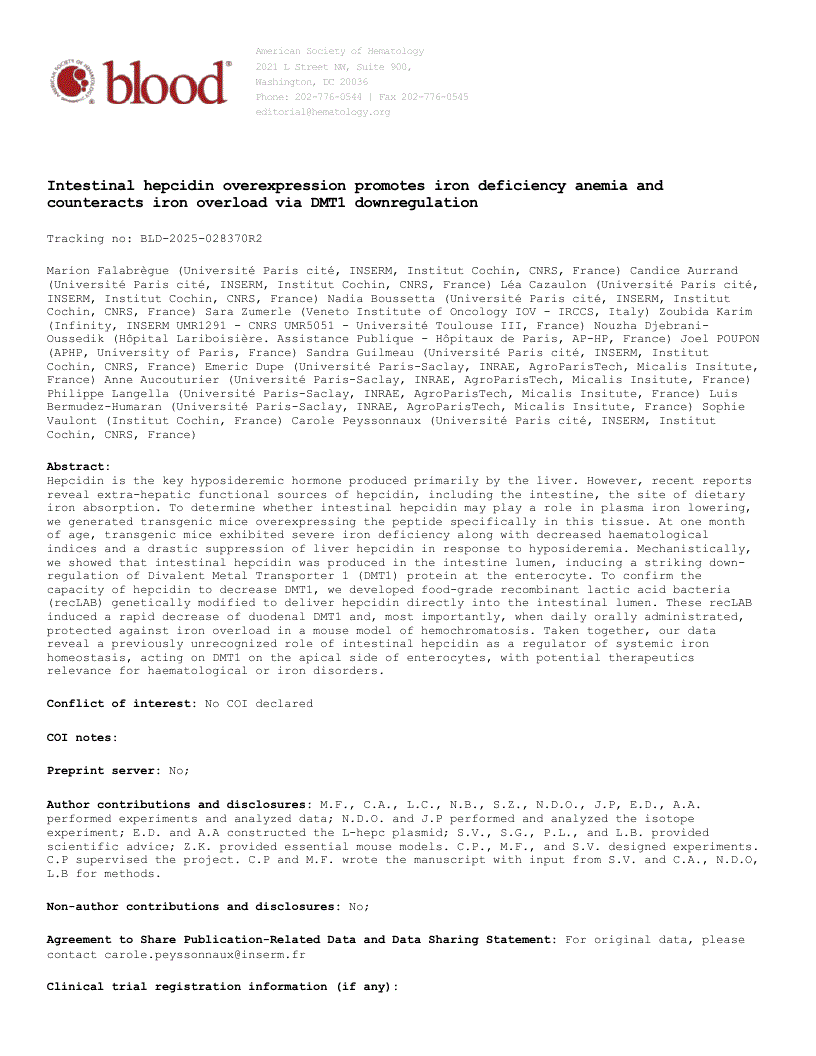Key Points
Gut hepcidin decreases iron absorption by downregulating Divalent Metal Transporter 1 (DMT1)
Food-grade Lactococcus lactis strain producing hepcidin (L-hepc) prevents iron overload in a mouse model of hemochromatosis
Hepcidin is the key hyposideremic hormone produced primarily by the liver. However, recent reports reveal extra-hepatic functional sources of hepcidin, including the intestine, the site of dietary iron absorption. To determine whether intestinal hepcidin may play a role in plasma iron lowering, we generated transgenic mice overexpressing the peptide specifically in this tissue. At one month of age, transgenic mice exhibited severe iron deficiency along with decreased haematological indices and a drastic suppression of liver hepcidin in response to hyposideremia. Mechanistically, we showed that intestinal hepcidin was produced in the intestine lumen, inducing a striking down-regulation of Divalent Metal Transporter 1 (DMT1) protein at the enterocyte. To confirm the capacity of hepcidin to decrease DMT1, we developed food-grade recombinant lactic acid bacteria (recLAB) genetically modified to deliver hepcidin directly into the intestinal lumen. These recLAB induced a rapid decrease of duodenal DMT1 and, most importantly, when daily orally administrated, protected against iron overload in a mouse model of hemochromatosis. Taken together, our data reveal a previously unrecognized role of intestinal hepcidin as a regulator of systemic iron homeostasis, acting on DMT1 on the apical side of enterocytes, with potential therapeutics relevance for haematological or iron disorders.


This feature is available to Subscribers Only
Sign In or Create an Account Close Modal